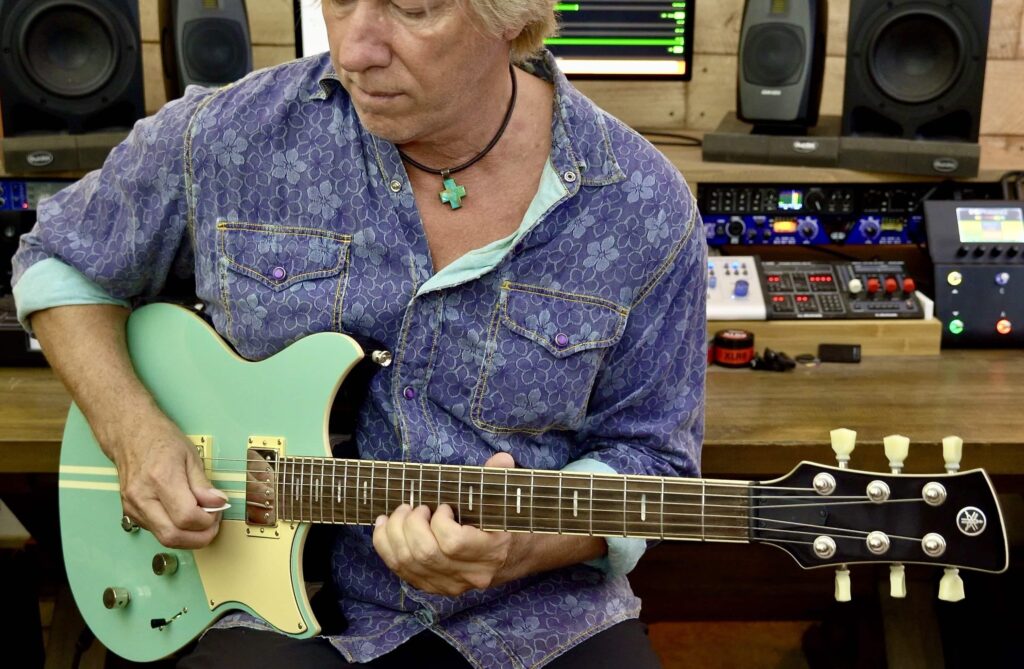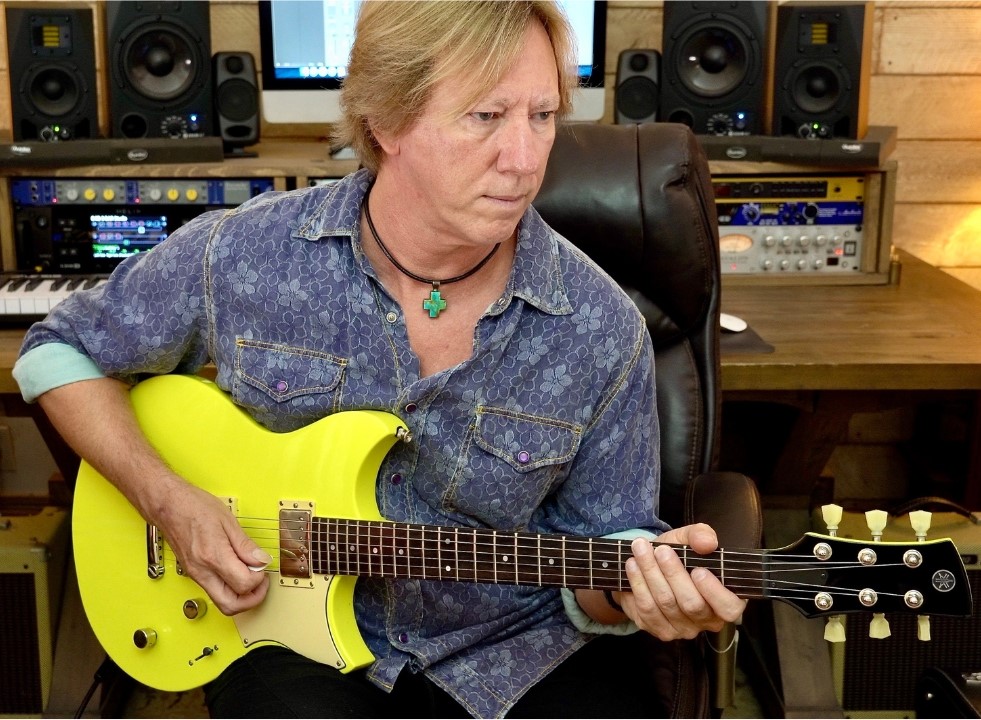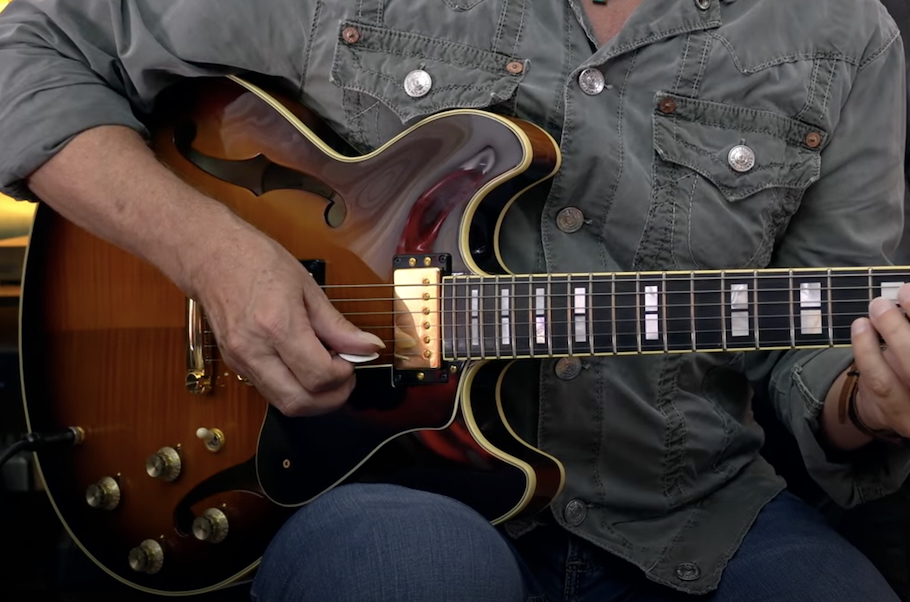Five Reasons to Take Guitar Lessons
Learning how to learn.
I can’t tell you how many times I’ve heard people say that learning music theory will ruin your “feel.”
Not true! In fact, learning music theory will only enhance it. That’s because it expands your knowledge, provides more options for composition, and improves your ability to translate ideas to other musicians.
I know phenomenal musicians who have zero formal training and play strictly by ear. I also know some players who have a master’s degree in music but struggle to improvise, or even get through the simplest song without sheet music. I think the best approach is to have a well-rounded ability in every aspect of your craft.
But how do you go about it? Sure, there are some amazing guitar tutorials online. Great players break down the parts to your favorite songs, and some even give you the theory and analysis behind the notes. Unfortunately, this method of learning is a one-way street. You can’t ask the teacher questions or receive feedback on posture, fingering or technique.
That’s why I suggest you instead consider taking real, in-person guitar lessons from a qualified instructor (your local music retailer can suggest someone in your area), as opposed to just learning nuggets of wisdom from a friend or a few riffs from some songs on YouTube.
Here are five reasons why.
1. Fresh Fingers
Learning anything from a book or video may give you the necessary tools to accomplish a certain task, but an instructor can guide you and add the elements of finesse that a one-way platform just can’t do.
As much as I love using Google search or YouTube for musical resources, the fact of the matter is that not everything on the internet is accurate. (Shock, horror!) Without the discerning eye and ear of a professional to give you instant feedback, you may end up learning techniques that will ultimately impair your abilities down the line. Sadly, I’ve seen this all too many times … and breaking muscle memory is way harder than learning something with fresh fingers.
2. Logical Progression
I’d say that most of us learn how to play the guitar “somewhere in the middle.” We can play a few chord progressions and a handful of riffs and Pentatonic licks … but without knowing the “how and why” it all works together.
As an educator, I’ve always been an advocate of logical progression. Start with the basics. Learn the correct fingerings for chords and scales, a few simple rhythmic values and the theory behind the notes, then gradually add techniques and musical expression to play songs with musicality. I also believe that you can develop musical sensibilities and feel by practicing stylistic grooves and developing your phrasing chops with melodic and rhythmic displacement techniques.
So look for a guitar teacher that builds you up from the beginning, or fills in the gaps to what you already know. With a solid foundation in all aspects of music, you can build a house in which creativity can flourish. A good instructor will push you to build a mansion, or help you renovate your existing structures into a beautiful new home.
3. The Inquisitive Mind
When I learn something, I want to know both the “how” and the “why.” If you don’t have a naturally inquisitive mind, you need to develop one in order to expedite your musical journey. For that reason, be sure to ask lots of questions of your instructor, so you can gather a full understanding of any topic.
Sometimes the answers require further questioning … and that’s just how it should be. Sometimes the information needs to be delivered in multiple ways in order for the concept to “stick.” Again, this is perfectly normal.
A good teacher will recognize whether or not the student fully comprehends the information being conveyed. I always confirm this with my students by asking them questions until I am sure they understand every aspect of the material we’re working on.
4. Setting Sail
Embarking on a journey of discovery often requires a road map. Structured courses that are curated by a professional educator often keep you on track.
If you know what your big picture goals are, you can take small steps towards that destination. For example, learning how the seven major scale modes work, one mode at a time. Adding a deadline is often a good idea too. Nothing motivates me better than a deadline. It’s the procrastinators’ kryptonite.
5. The Jam Factor
When you learn from a real-life instructor, you have the opportunity to hear how they play, and how they integrate the same information you’re working on.
So many professional guitar players cite their instructor as the driving force behind the musical storm they finally became, and there’s a good reason why. Jamming with your mentor will give you a growth perspective. You’ll be able to actually hear how well you’re doing through comparison, then make small corrections and implement their suggestions in real time.
Virtual Learning
If you can’t find a good local instructor, you may be able to work with a qualified guitar teacher via video chat online. However, I suggest you take some time to determine what you’re trying to achieve in advance of taking those kinds of lessons. Audio quality is improving radically on online platforms such as Zoom, but latency and bandwidth compression often negate the ability to jam online.
So make a list, and work through the list by asking lots of questions. You can always record your video lessons, enabling you to watch them again for reference. Maximize your time and get your instructor to demonstrate ideas, concepts and examples while you’re online with them.
As you are probably aware, guitar courses are also available for subscription, streaming or download. This is where my personal legacy as an instructor primarily resides.
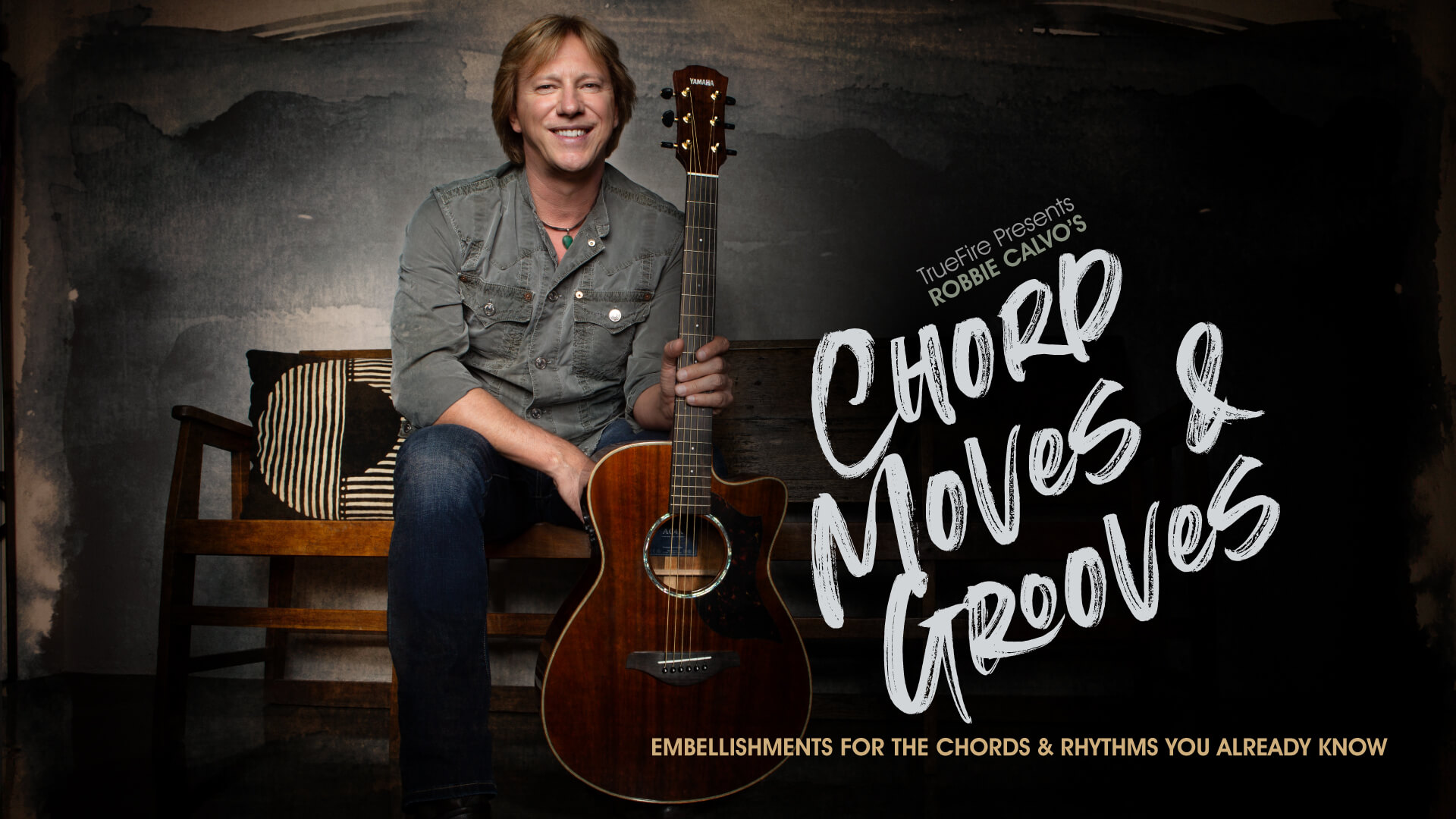
These courses are a great way to work with your favorite players and discover specifically what they have to offer you. Just make sure you find someone who fills in any gaps in your knowledge and nurtures your creativity through real-world musical examples.
The Video
The harmonic structure of the progression I’m playing in this video takes you through three different keys within the context of a four-bar phrase. Having the knowledge to analyze, play and improvise over this kind of progression generally comes from having some kind of formal training, so I thought this would provide a good example of what it might take to handle this kind of musical challenge without the guidance of an instructor.
I’m using a Yamaha CSF-TA TransAcoustic guitar and layering its tones into the mix with a subtle strumming part. I’ve double-tracked this guitar part, adding small amounts of the onboard reverb and chorus, panning the two hard-left and hard-right for extra width. The arpeggiated overdub defines the harmonic structure of this progression by following the upper voices in the strummed guitar part.
The melodic phrases are being played on a Yamaha SA2200 semi-hollow body electric through a Line 6 Helix processor. I’m targeting chord tones of the five chords to establish their tonality within the framework, but I’m also making sure you can hear the characteristic tones you’ll find in some of those tasty chord voicings too!
The Guitars
The CSF-TA is the parlor-sized powerhouse in the TransAcoustic range. Like all TA guitars, it features two onboard reverb types (Room/Hall) as well as chorus, all without the need for external amplification. All effects can be dialed in to taste with a sweepable mix control.
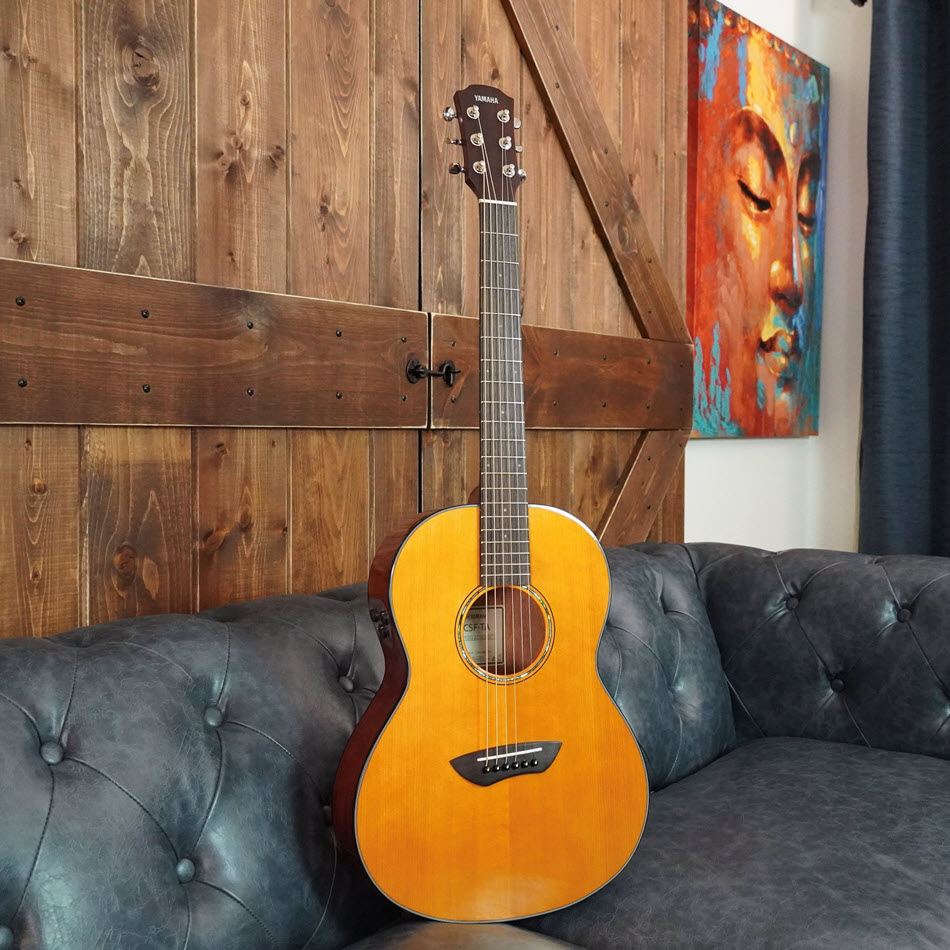
TransAcoustics also feature an excellent undersaddle piezo pickup and a preamp that works beautifully for recording directly to DAWs or for plugging into the mixing console at a live gig. These versatile acoustic-electric guitars are excellent for young beginners due to their short scale length and small body size, and the solid Sitka spruce top will only get better with age.
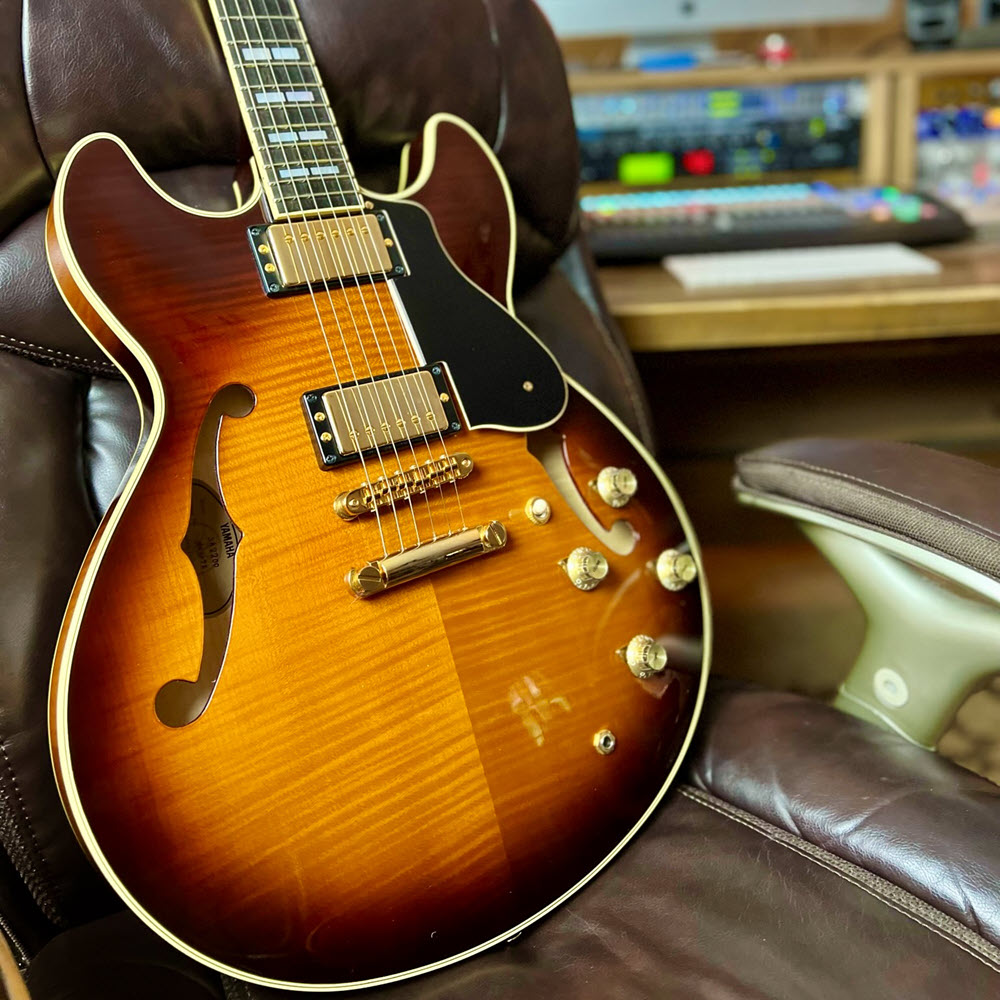
The SA2200 semi-acoustic guitar may be one of the best sounding electrics on the market. These amazing guitars resonate like a piano, play like a dream, sit beautifully in the mix, and look like a million bucks on camera.
The Wrap-Up
When we take intentional steps towards our goals, we get closer to them.
Working with a professional guitar teacher can guide your steps around the pitfalls, keep you moving towards your destination, and perhaps most importantly, inspire you to reach the same high level of proficiency. Lofty goals indeed, but the right instructor can help you achieve them!











